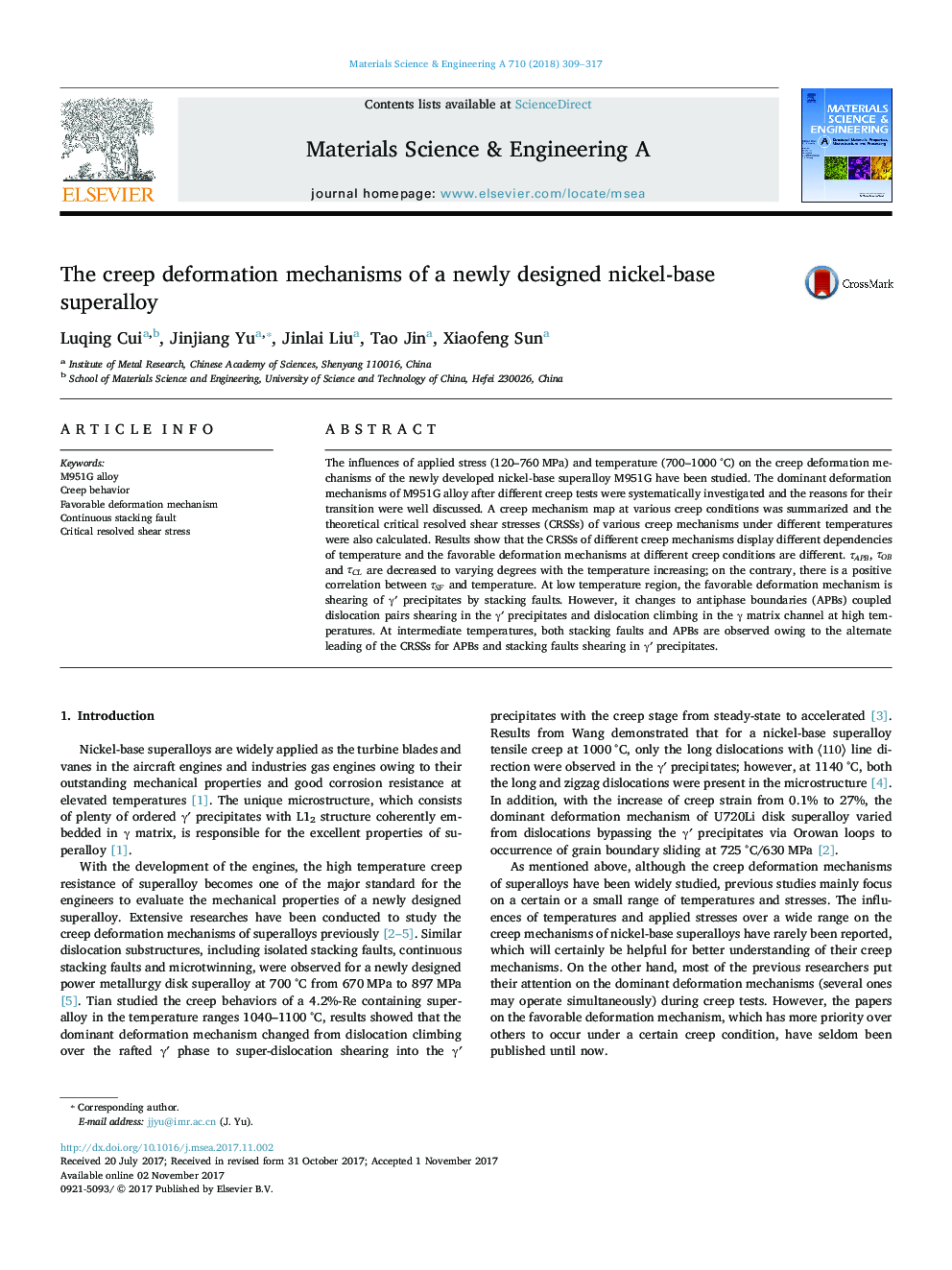| Article ID | Journal | Published Year | Pages | File Type |
|---|---|---|---|---|
| 7974498 | Materials Science and Engineering: A | 2018 | 9 Pages |
Abstract
The influences of applied stress (120-760 MPa) and temperature (700-1000 °C) on the creep deformation mechanisms of the newly developed nickel-base superalloy M951G have been studied. The dominant deformation mechanisms of M951G alloy after different creep tests were systematically investigated and the reasons for their transition were well discussed. A creep mechanism map at various creep conditions was summarized and the theoretical critical resolved shear stresses (CRSSs) of various creep mechanisms under different temperatures were also calculated. Results show that the CRSSs of different creep mechanisms display different dependencies of temperature and the favorable deformation mechanisms at different creep conditions are different. ÏAPB, ÏOB and ÏCL are decreased to varying degrees with the temperature increasing; on the contrary, there is a positive correlation between ÏSF and temperature. At low temperature region, the favorable deformation mechanism is shearing of γⲠprecipitates by stacking faults. However, it changes to antiphase boundaries (APBs) coupled dislocation pairs shearing in the γⲠprecipitates and dislocation climbing in the γ matrix channel at high temperatures. At intermediate temperatures, both stacking faults and APBs are observed owing to the alternate leading of the CRSSs for APBs and stacking faults shearing in γⲠprecipitates.
Related Topics
Physical Sciences and Engineering
Materials Science
Materials Science (General)
Authors
Luqing Cui, Jinjiang Yu, Jinlai Liu, Tao Jin, Xiaofeng Sun,
